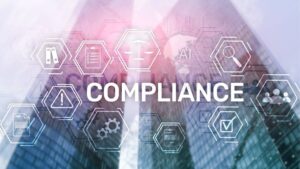
By Greg Pinn, Director of Name Screening, Babel Street
With more than 64 countries conducting elections this year – many of which will be consequential for years to come – the potential promotion of so many to positions of power increases the risk of corruption and bribery, which creates greater need for financial institutions (FIs) to identify and monitor Politically Exposed Persons (PEPs).
PEPs are defined as individuals who are or have been entrusted with prominent public functions – through elections, appointments, coup d’état, peaceful, or violent means. Because of their influence on government policy or procurement, PEPs are at high risk of corruption or bribery. In addition, any close business associate or family member of such a person may also be deemed as being a risk.
Elections are not the only situations that impact global bribery and corruption risk; forceful takeovers and coup d’états are happening with regularity. According to the Colpus dataset, nine successful military coups have struck Africa since 2020. And, as an October 2023 article in the The Economist noted, “You can now walk across nearly the widest part of Africa, from the Atlantic to the Red Sea, passing only through countries that have suffered coups in the past three years …”
How financial institutions assess PEP risk
FIs must identify PEPs and effectively manage the risk surrounding them. In accordance with the Financial Action Task Force (FATF) Recommendations to countries who make and enforce regulations to combat terrorist financing, money laundering and the proliferation of weapons of mass destruction, FIs are advised to put in place additional anti-money laundering measures dealing with PEPs. This is both to identify such individuals and to assess, manage, and monitor the enhanced level of risk associated with having them as clients.
FIs and other regulated entities must evaluate various factors to assess the level of risk posed by a particular PEP. This includes:
- Country risk – Understanding comparative risks for countries, including their level of election integrity and freedom of the press, is essential to assessing PEP risk.
Limitations in press freedom can often limit corruption research, resulting in unreported crimes. Country risk, however, must be balanced; some institutions are too reliant on this single point. For example, while Nordic countries have a history of the highest Transparency International Corruption Perception Index (CPI) scores, there have been numerous cases of bribery and corruption in those countries. Because these countries have strong freedom of the press, it can be easier to uncover these cases than in other jurisdictions. No PEP should be dismissed outright solely based on location. - Event timelines – Corruption is high immediately before and after elections. Buying influence before a candidate is elected or illegally funneling money to their campaign are key corruption events.
- Position level and locale – The level of one’s position is also an important measure of PEP risk. It is common practice to consider PEPs with greater influence (presidents, prime ministers, national legislators) as being a higher risk than local leaders; however, the mayor of Paris, London, Mexico City, or Tokyo will have a higher risk profile than the mayor of a smaller city. Exceptions must be made to increase the risk profiles of PEPs when their jurisdictions elevate their power potential.
Legislation around the world differs for how domestic versus foreign PEPs should be treated. For example, in the UK, new rules went into effect in January 2024 classifying domestic PEPs as lower risk than foreign PEPs. They still require enhanced due diligence, but less than that applied to foreign PEPs. - Relationships – Bribery schemes often go beyond direct cash payments to involve complex money laundering or remuneration such as paid tuition for children, trips, cars, or luxury goods for spouses or close associates, or purchasing homes for parents.
Next-Gen approaches to PEP risk mitigation
PEP regulations around the world are changing, with stricter requirements for due diligence and the costs of non-compliance violations increasing every year. Global penalties for non-compliance exceeded $10 billion in 2020. It is therefore critical for FIs to conduct thorough PEP screening to assess the level of risk associated with each individual and determine the extent of due diligence required to reduce risk and avoid fines.
For PEP risk management to be as efficient and effective as possible, FIs must use new technologies, such as automated workflows, AI-based screening, and advanced name matching technologies. These technology-enabled solutions help address some common problems in traditional PEP screening approaches:
With volumes of data only increasing, it is key for FIs to utilize solutions that automate the identification and ongoing monitoring of PEPs and allow for a holistic view of risk. Fortunately, AI-driven solutions are available that offer faster, more automated risk scoring of PEPs, enabling users to configure workflows based on identified risks. This increases due diligence efficiency and precision, allowing FIs to attain strong returns on investment by including scoring methodology in the technology workflows.
Reducing the number of false positives through enhanced record matching practices is key to expediting PEP risk assessment. Solutions that leverage statistical modeling, name databases, and artificial intelligence help reduce the repetitive, manual tasks of Level 1 remediation.
Implementing name matching technology can be done via a replacement of software solutions or by integrating a post-processing engine, which refines the matches produced by an existing system to a more manageable number. Using advanced solutions greatly reduces the time and resources FIs need to spend remediating matches.
Technology is key to counter corruption
Corruption and bribery incidents related to PEPs occur daily; elections are just one example of events that elevate the volume of financial crimes committed. The time is now for FIs to ensure their processes and tools for identifying and monitoring PEPs are efficient, effective, and flexible to adjust to changing threats and regulations.
About Author:
Greg Pinn is Babel Street’s Director of Name Screening in charge of anti-money laundering (AML), know your customer (KYC), and customer due diligence (CDD) product development. He has extensive experience in regulatory compliance with a focus on bringing products and solutions to market to mitigate regulatory and reputational risk faced by financial institutions and regulated businesses. Greg holds a Bachelor of Science in Computer Engineering from the Georgia Institute of Technology.















